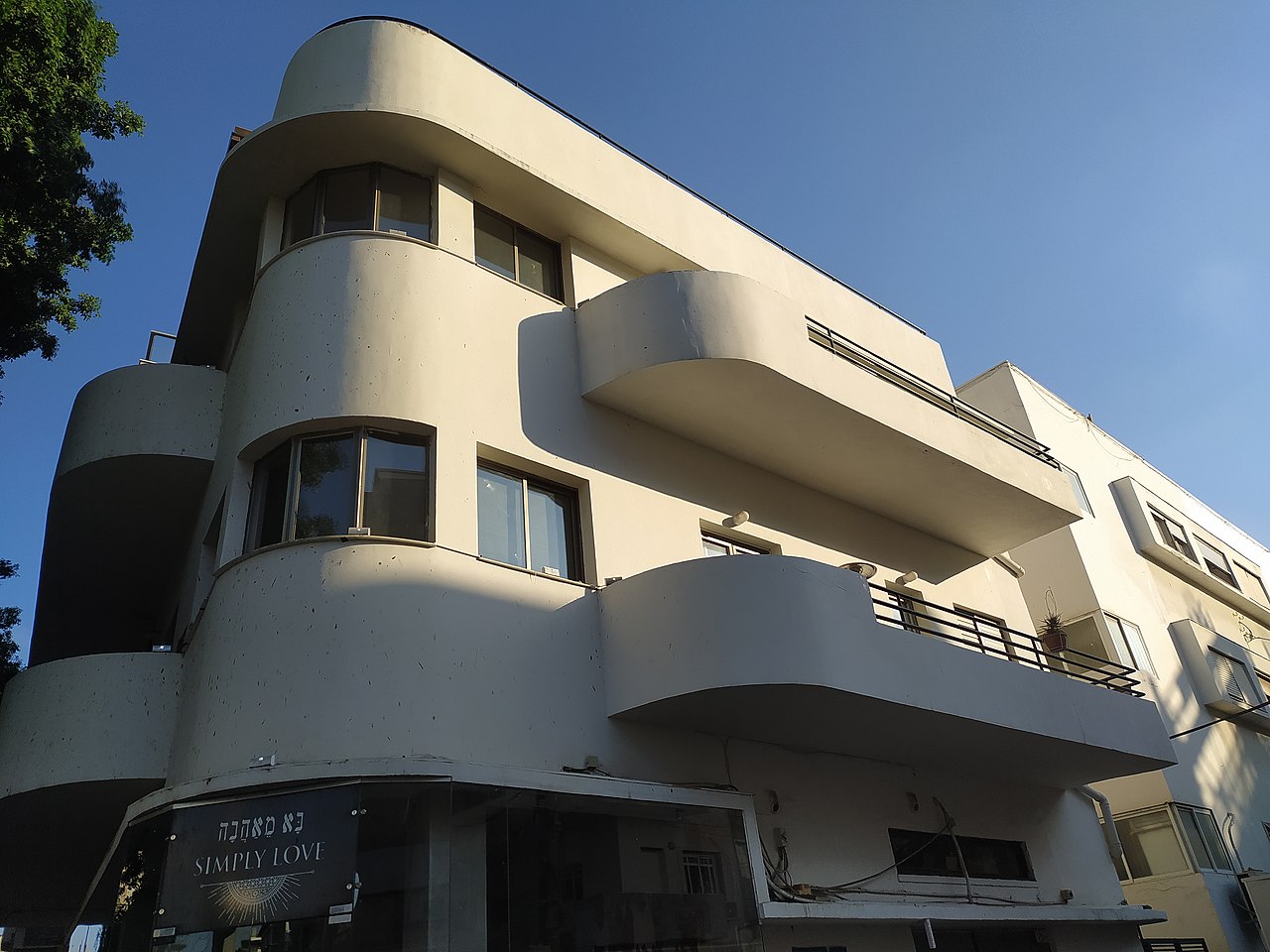Located at 77 Dizengoff Street, in the heart of Tel Aviv’s White City, is the Bauhaus Center, which is both a gallery and a store focused entirely on Bauhaus architecture. There are over 4,000 buildings in Tel Aviv designed in the Bauhaus style, which is a form of modernist architecture. In 2003 UNESCO named Tel Aviv a World Cultural Heritage Site thanks to its high concentration of Bauhaus architecture.
 The Tel Aviv Bauhaus Center (Image source: Mujaddara CC BY-SA 3.0)
The Tel Aviv Bauhaus Center (Image source: Mujaddara CC BY-SA 3.0)
You might hear Bauhaus architecture referred to as International Style, Modernism, or New Building. At the center, you can see a permanent exhibition displaying photographs, documents, and models relating to Bauhaus in Tel Aviv. You can also enjoy temporary exhibitions covering architecture, art, and design.
The center works in collaboration with the Israeli UNESCO committee and the Tel Aviv-Yafo municipality as well as museums, and other institutions, to bring visitors the most accurate and interesting exhibits about Bauhaus.
Bauhaus was the name of a school devoted to art, design, and architecture that operated in Weimar, Germany from 1919 to 1933. The school’s establishment followed the end of World War II, and the artists and architects at the school were determined to create a better future. They wanted to revolutionize accepted social norms, and so they valued talent and ability above class and rank. The school’s founder, Walter Gropius was a charismatic character and he persuaded leading artists from various fields to teach at his school, including Kandinsky, Paul Klee, Gunta Stolzl, Hannes Meyer, and others.
 A Bauhaus building in Dizengoff Street (Image source: Artem.G CC BY-SA 4.0)
A Bauhaus building in Dizengoff Street (Image source: Artem.G CC BY-SA 4.0)
The school had an introductory class where students studied different materials, and had hands-on experience creating a variety of items. There were courses in bookbinding, dance, photography, theater, graphics, painting, carpentry, sculpture, metalwork and more. The aim was that students would be multi-disciplined, think out of the box, and create holistically.
Pro Tip: Hungry for more Bauhaus? Visit the Bauhaus Museum at 21 Bialik Street which exhibits mainly Bauhaus-style furniture, decor, and art.
It was only in 1926 when the Bauhaus school moved to Dessau and began focusing more on industrial creation, that architecture became a part of the syllabus. It was in the last few years before World War II, that the school became increasingly political, and the school director, Hanne Meyer promoted the idea of utility over luxury. Meyer and a group from the school left for the Soviet Union in 1930, and Ludwig Mies van der Rohe took over as director. He took a new approach to education and focused almost exclusively on architecture.
The school finally closed in 1933 for political and economic reasons. Some former pupils stayed in Germany while others traveled to America, and six Jewish architects from the Bauhaus school traveled to Israel.
The Bauhaus Center is located a few steps from Dizengoff Square, which was planned in 1934 and is considered the “Bauhaus Plaza” at the heart of the White City. The Bauhaus Center was established in 2000 to educate the public about the magnificent architecture of the White City.
 A Bauhaus building in Rothschild Boulevard (Image source: Artem.G CC BY-SA 4.0)
A Bauhaus building in Rothschild Boulevard (Image source: Artem.G CC BY-SA 4.0)
The newly arrived Bauhaus architects were joined by thousands of immigrants escaping the rising antisemitism in Europe. Tel Aviv had only been founded a few years earlier, and the architects set about designing houses for the growing city. Bauhaus architecture had to be slightly altered to suit the Middle East’s climate, lifestyle, and available materials. For this reason, there are some differences between Bauhaus in Europe and in Tel Aviv.
Pro Tip: The best places in Tel Aviv to see Bauhaus architecture are Rothschild Boulevard, Dizengoff Street, Bialik Street, and Sheinkin Street. Pro Tip: Want to sleep in a Bauhaus building? Tel Aviv has several hotels and guesthouses that are in Bauhaus structures including Lily & Bloom Boutique Hotel, Cinema Hotel, Norman Luxury Boutique Hotel, Diaghilev Art Suites Hotel, and Poli House Hotel.
When Bauhaus's ideas were introduced to Tel Aviv in the 1930s, there were some adaptations and modifications that took place, influenced by the local context and needs.
Pro Tip: Embedded in the sidewalk outside some of Tel Aviv’s Bauhaus buildings are brass plaques indicating that the structures are part of the UNESCO White City.